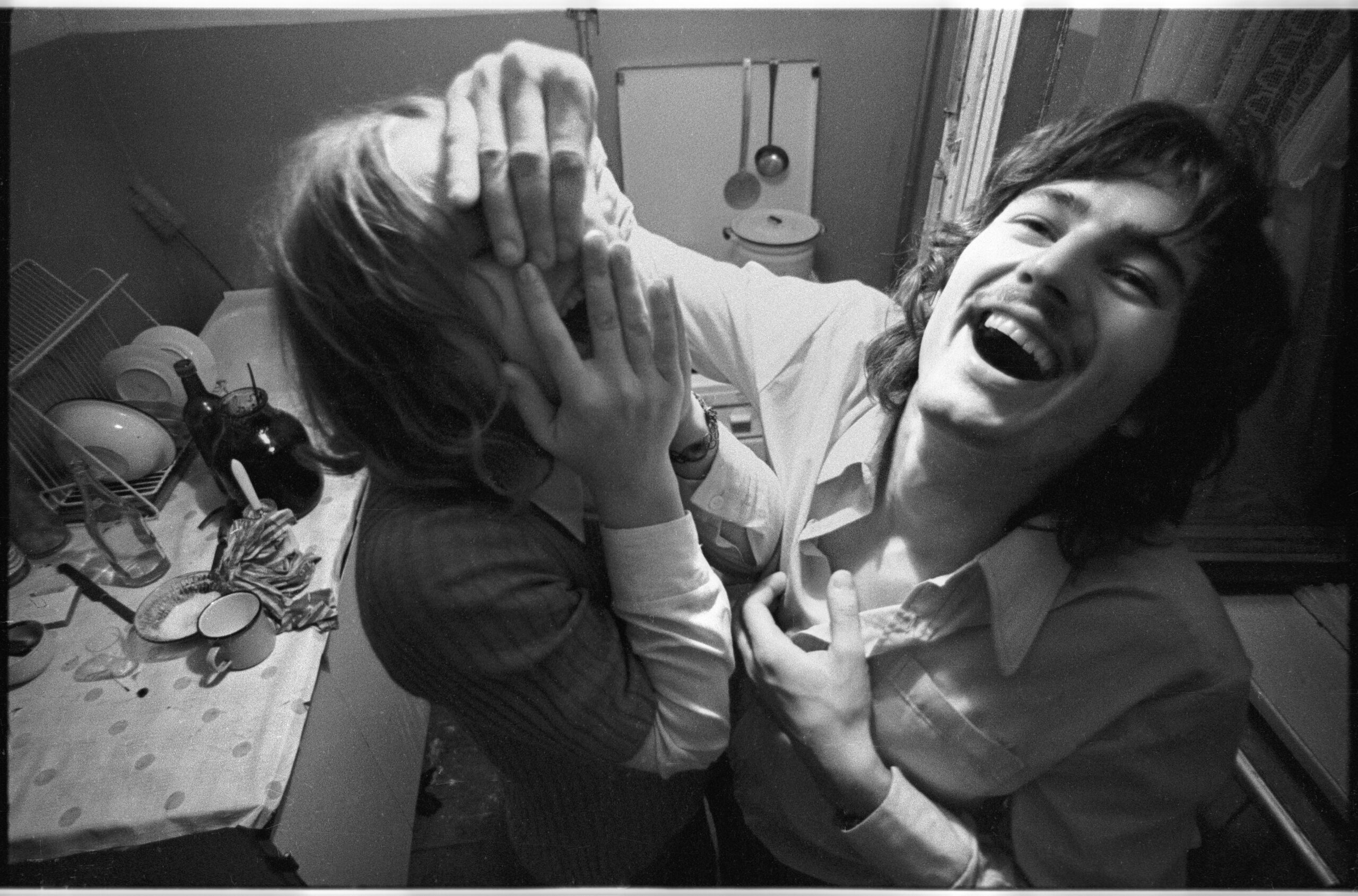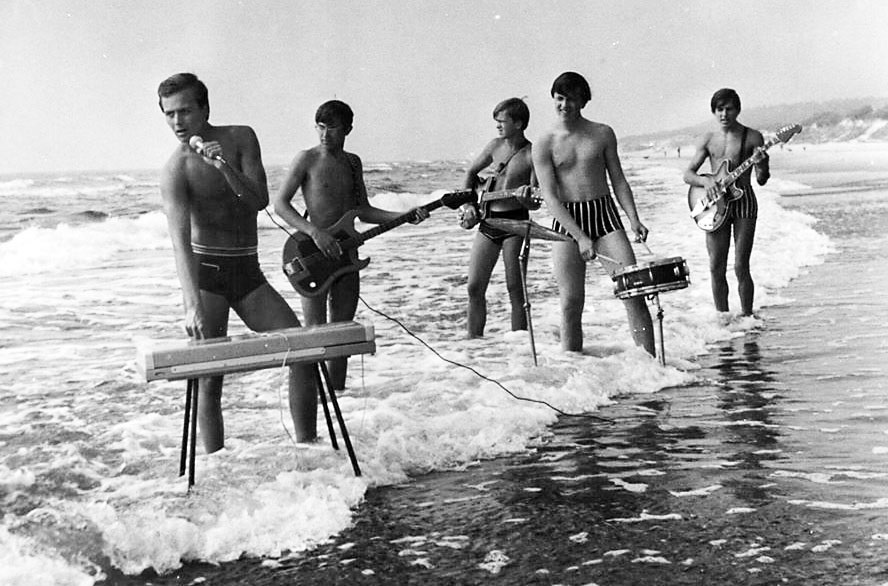Exactly fifty years ago, on 14 May 1972, Kaunas and Lithuania’s history was changed by an event in the city centre. Romas Kalanta, protesting against the Soviet regime, poured petrol on himself in front of the Musical Theatre and set himself on fire. His notebook bore the inscription: ‘My death was the fault of the system’.
This tragedy sparked an unprecedented public opposition, which even led to imprisonment for many young people who wanted to participate in the funeral that became protests (later called the Kaunas Spring), not to mention the suppression of the artistic ambition they had begun, at least in public. But in the underground, the spirit of freedom remained.
In 2022, Kaunas is a city of a free country, proud to be the European Capital of Culture. While bloody massacres are taking place hundreds of kilometres away in Ukraine, a number of elements of the Kaunas 2022 programme take on a new, even more significant meaning. The exhibition “1972. Breaking the Wall” is high on this list. “We are sure that this exhibition will touch a nerve. Through this exhibition, our city will engage in a candid conversation with itself like never before,” declare the organisers.
The exhibition, which opens on 14 May, will run all summer at the Kaunas Central Post Office, not far from the site of Kalanta’s self-immolation. The author of the idea and the exhibition’s curator is the art historian Prof Dr Rasa Žukienė (Vytautas Magnus University). She says that although the event is intended to commemorate the 50th anniversary of Kalanta’s death, it will also highlight the problem of the individual’s inner freedom, which has been directly linked at all times to the resistance against violence and oppression.

A Broad Spectrum of Ideas of Free Life and Dissatisfaction With Reality
“This exhibition is dedicated to events in Lithuanian life and the world of art whose existence is for some an integral part of their being, but for others, especially those born after 1990, hardly believable. For a large part of Lithuanian society, it is already hard to believe that this could have been the case in the Sovietised Lithuania, on the other side of the Iron Curtain, in the 1970s and 1990s: modern works were created, openly opposed to the system, the Soviet hippie movement developed, and then instead of liberty, love, and rock’n’roll, we were met with violence, and the suppression of public thought and art began,” explains the art critic.
Constraints and violence did not stifle the desire for freedom then, just as they do now. One of the bastions of freedom in the 7-8th decade of the 20th century was the city’s cultural scene – theatre, art, youth music groups, cinema. The exhibition will focus the gaze of contemporary Kaunas citizens and guests on the groups of the disobedient and those who disobeyed the system. These include the Kaunas hippies, rock bands, mime artists and professional painters, whose works reflected the moods of the members of the unfree society and who experienced ideological violence after the burning of Romas Kalanta.
R. Žukiene has managed to assemble an awe-inspiring team for the exhibition – the section dedicated to the memory of R. Kalanta is curated by art historian Rimantė Tamoliūnienė (Kaunas County Public Library), the works of art and photography have been selected for the exhibition by art historian Genovaitė Bartulienė (National M. K. Čiurlionis Museum of Art), theatre and pantomime are curated by art historian Edgaras Klivis (VMU), music – by composer Zita Bružaitė (Kauno “Santaka”), the cinema and video programme – by film critic Gediminas Jankauskas (VMU), the “Chronicles of the Catholic Church of Lithuania” – by historian Dr Arūnas Streikus (Vilnius University).
“My team is fantastic; each of them has been known to me for a long time as experts and admirers in their field. The team members have done a lot of research and in-depth studies; half of them are PhDs,” says Žukienė, who brought her team together two years ago when the exhibition concept was included in the Kaunas 2022 programme. According to the art historian, it was not difficult at all to convince her colleagues.

Guitars From Stolen Wood and a red Necklace
“1972. Breaking Through the Wall” is not just an exhibition of artworks. The mood of Kaunas Spring is created, and the stories of contemporaries are brought to life with various artefacts, documents, film stills from demonstrations or pantomime performances – and, of course, music and fashion. R.Žukienė and her colleagues had the opportunity to interact with an impressive number of people who remember 1972, either reviving acquaintances or making new ones, in the course of preparing the exhibition.
“The most striking thing for me was that almost every person over 50 years old, when asked about Kaunas in 1972, remembers something – their eyes light up, and they want to speak. So many years have passed, and not everything has been told and written down yet. I have heard many stories about how one was beaten by militia on Laisvės Alėja on 18 May 1972, how the attenuators in one’s parents’ transistor squeaked (they listened to Western radio stations), how one climbed over the fence into the furniture factory to steal a board to make a guitar, how the prisoners in Pravieniškės used to make clogs. There are many such stories,” the art historian intrigues. She points out that during the preparation of the exhibition, unique exhibits were found that could be of interest to museums in the country.
“At first, I was even shy to ask for the fashionable clothes of a past era. However, 40-50 years have passed. But it turns out that they do exist, and I got them – I got them, for example, from an artist who designed the fabric herself, printed it in a factory in Kaunas, modelled it and made a dress. And she knitted a red necklace for herself because she needed a red necklace. One woman, now a professor, had the idea to recreate a bag she had as a teenager with the inscription “Love, Art, Music”. She even discovered the same yarn. I already have that cool bag. We will display everything,” says R. Žukienė.
There will be discussions with the curators, historians, and participants of the 1972 Spring events in Kaunas during the exhibition. Educational programs will be offered for students and youth of different ages. The show and the conversations it provokes will encourage a more active dialogue between the generations, other countries and nations of Europe, who have different histories but still share many similarities that unite them.
“A common dialogue on freedom and the expansion of its boundaries in art and society, thinking about cultural diversity and place of cultures in the modern world is relevant and necessary both in Lithuania and Europe,” believes the curator of “1972. Breaking Through the Wall”.
Location: Kaunas Central Post Office
Time: 14 May 2022 – 31 August 2022
Organiser: Kaunas 2022
Partners: National M. K. Čiurlionis Museum of Art, MO Museum, Lithuanian National Art
Museum (Vilnius), Ninth Fort Museum, Vytautas Magnus University, Valdas Adamkus Library-
Museum, Kaunas County Public Library, Kaunas City Museum, Embassy of the Czech Republic
in Lithuania, City Gallery of Prague (and others).

